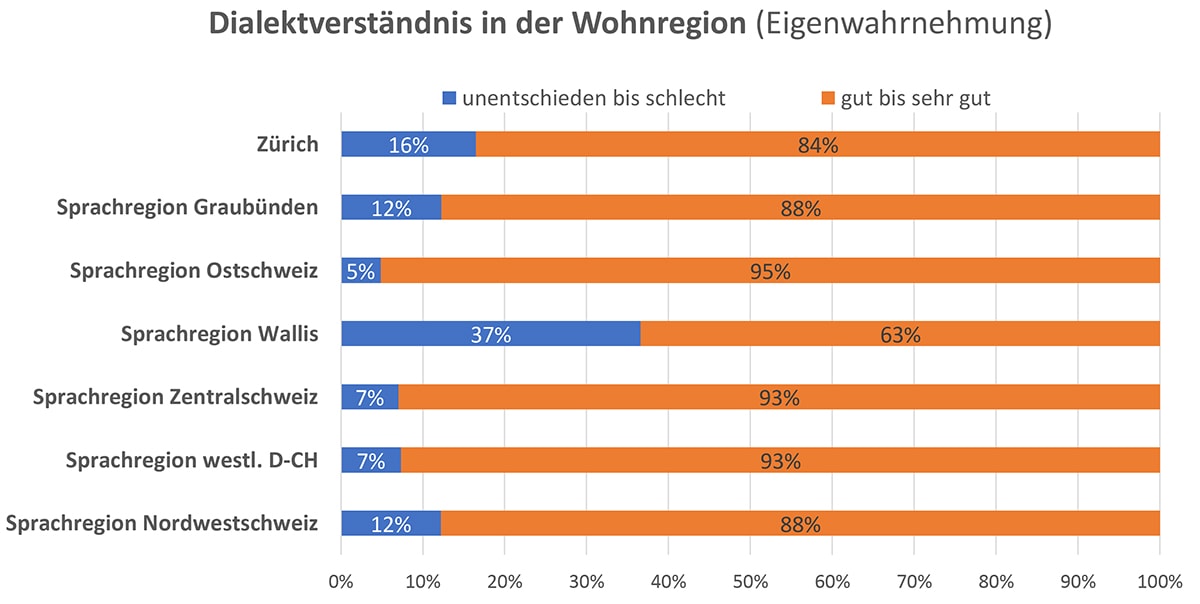Dialect in advertising holds many opportunities
Bico communicated "Für ä tüüfa gsundä Schlaaf" as early as 1973, but only in recent years has written dialect been used more frequently in advertising. An empirical study on the topic shows that dialect in communication offers many opportunities for brands, but that the variety of dialects is also complex and that its use requires a deeper understanding.

Swiss German dialects are complex and diverse. When dialect is used in advertising, some people today try to use a "standard Swiss German" or "Olten-Bahnhofsbuffet dialect" that is as neutral as possible. Since such a dialect does not exist, a specific Swiss German dialect is inevitably and sometimes unconsciously used. In individual cases, specific dialects such as Züritüütsch, Bärndütsch, Baseldytsch, etc. are also deliberately used.
In addition, the way of writing is not as banal as it may seem at first, writing is always only a reflection of what is spoken.
Not all dialects are well recognized in written form
Not all Swiss residents assign advertising messages in dialect to the correct region. Bärndütsch is best recognized as such. The majority of messages in Züritüütsch, Baseldytsch and others were not correctly assigned.
Many opportunities in advertising
Communication in written dialect offers opportunities. About every second person surveyed prefers Swiss German as the language of the brand message. Use cases show that a brand communicating in Swiss German can potentially increase its local positioning and perceived closeness to customers. This potential is even greater for foreign or international brands than for companies already strongly anchored in Switzerland.
Specific written Swiss German dialects trigger different effects depending on the language area of the recipient. Which dialect is the right one in an individual case depends on a variety of factors of the communicating brand and the receiving person.
In individual cases - and if poorly implemented - the use of Swiss German by a foreign company can be perceived as ingratiation and lead to reactance. The risk of negative effects is about three times greater for international companies than for Swiss companies.
The risk of a deliberate negative evaluation due to poor comprehensibility of written dialect is low as long as the written texts are not too long. In the cases studied, the comprehensibility and the perception of the advertising brand in terms of reliability and competence do not suffer when communicating in Swiss German.
The effect between national and regionalized campaigns in dialect is comparable, if only because even a national campaign must always use a specific dialect due to the lack of a "neutral Swiss German". Advertising in standard German remains a "safe way", but forgoes the additional chance to position the brand "close to the people".
Consequences for advertising
The study underscores some assumptions that have been suspected in communication until now. The fact that standard German is received so well - and in some cases better than Swiss German - in some situations and language regions is surprising. Another new finding is that just because a dialect is likeable, it does not necessarily have a positive effect in written form. And the fact that only Bernese dialect and standard German can be unerringly assigned in written form is just as surprising.
For the Study "Ädvertising - Dialect in Advertising" of the research community consisting of HWZ Zurich, Htp St.Gallen, Link, Publicis Zurich and the Swiss Idiotikon with the University of Zurich, 6,300 inhabitants:inside from the German-speaking part of Switzerland aged 15 to 79 were surveyed online from November 2022 to February 2023.











